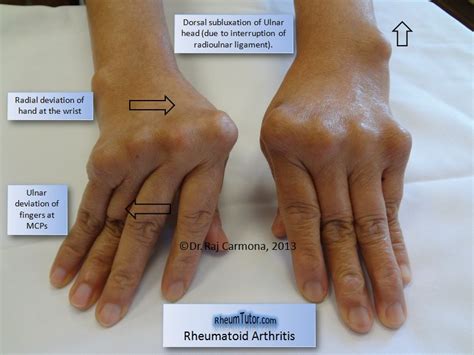Rheumatoid arthritis (RA) is a chronic, systemic autoimmune disease primarily involving the joints. It’s characterized by the inflammation of the synovium, the lining of the joints, leading to cartilage and bone damage. Early rheumatoid arthritis often affects smaller joints first, such as those in the fingers and toes. As the disease progresses, it typically spreads to larger joints, including the wrists, knees, ankles, elbows, hips, and shoulders, usually affecting the same joints on both sides of the body.
The joints involved most frequently include the proximal interphalangeal (PIP) and metacarpophalangeal (MCP) joints of the hands, the wrists, and small joints of the feet, including the metatarsophalangeal (MTP) joints. Shoulders, elbows, knees, and ankles are also commonly affected. Symptoms of RA can start suddenly or develop slowly over time, varying from one person to another. Common symptoms include pain, stiffness (especially in the morning), and in some cases, tingling or burning sensations in the joints.
In a joint affected by RA, inflammatory cells gather in the synovium, forming a fibrous layer of abnormal tissue known as pannus. This pannus releases substances that accelerate bone erosion and cartilage destruction, damaging surrounding ligaments. The exact cause of RA is unknown, but treatment options include lifestyle changes, physical therapy, occupational therapy, nutritional therapy, medication, and surgery. RA symptoms may fluctuate, with flare-ups followed by periods of remission.
For more detailed information about RA and its effects, visit Healthline, Mayo Clinic, Arthritis Foundation, MSD Manuals, and Johns Hopkins Arthritis Center for comprehensive insights.



